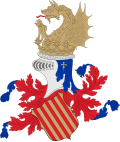This article needs additional citations for verification .(December 2016) |

Rafelcofer is a municipality in the Valencian Community of Spain, situated within the province of Valencia in the Safor comarca. The town is located approximately 74 kilometers south of Valencia city and about 6 kilometers from the Mediterranean coast. The terrain is predominantly flat, with a slight elevation toward the south. [1]
The town's history includes evidence of ancient settlements, including the village of Rabat. Artifacts from the Iberian, Roman, Arab, and Christian periods have been discovered. [1]
Rafelcofer offers various cultural and natural attractions, including a local museum, El Rabat, and the Mountain of Sant Miquel, as well as various dykes and mills, some dating back to 1849 with Islamic origins. [2]
The town celebrates several festivals, including San Diego on the third weekend of August and a Cultural Week in the first week of July, leading up to the patron saint festivities in the second week of July. These events often feature moros y cristianos parades. [2]
Rafelcofer has a population of approximately 1,400 inhabitants. [1]
